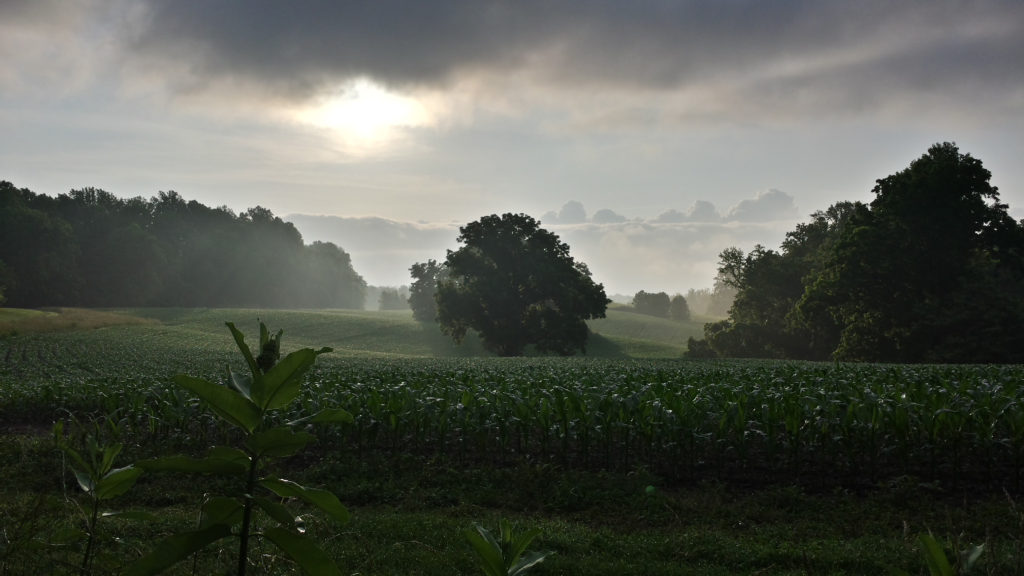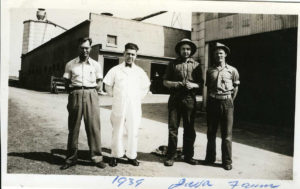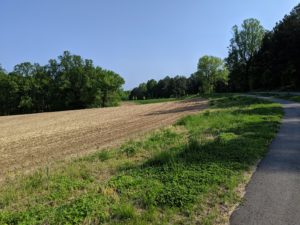The Smithsonian Environmental Research Center stays close to its heritage by leasing land to farmers
by Stephanie Fox

Summer farm fields on the SERC campus (Photo: Nicole Campbell)
Before the Smithsonian Environmental Research Center (SERC) became a bustling scientific center, adorned with research labs and paved roads, it was the Java Dairy Farm, run by an eccentric millionaire named Robert Lee Forrest. In 1962, Forrest passed away, leaving his 368 acres of farmland and other properties along Maryland’s Rhode River to the Smithsonian Institution. Despite some talk of selling the farm to grow the Smithsonian’s endowment, further inspection of the abandoned property revealed an ideal space for field biology and ecology studies.
Over the past 57 years since Forrest’s donation, the property has grown to 2,650 acres, 19 labs and nearly 100 researchers. The majority of the natural terrain is dedicated to studying environmental issues like nutrient pollution and climate change. But SERC also has set aside about 270 acres (three plots of land) for local farmers to lease, as a reminder of the center’s agricultural origins.

Farmhands at the Java Dairy Farm in 1939. Owner Robert Lee Forrest donated his farm to the Smithsonian in his will in 1962. (Photo courtesy of Norma Nelson)
“We’re very big supporters of agriculture, and it’s an important part of the history of the land,” said Bob Gallagher, SERC’s executive officer. He noted that most people are unaware that the campus sits atop a former dairy farm, which makes keeping some land for farmers even more important. “If we stop farming these other pieces of land and let them grow up, people would forget that this was in agriculture, and that agriculture makes an important contribution. Not only to the economy, but the culture and the history of this landscape.”
The three farmers that lease SERC land today grow commercial crops like corn, soybeans and hay. One farmer is even attempting to obtain organic certification, planting hay to be fed to their off-site cattle as part of an organic beef operation.
When farmers sign their 3-year SERC lease, they agree to adopt “Best Management Practices” with respect to nutrient and management strategies, as well as tillage. These practices are designed to benefit water quality and water conservation, while maintaining or even boosting crop yields.
Billy Ford, who works the 54-acre Contee Farm at SERC, said he rarely tills his farmland. “We try not to till,” he said. “Anything that can sustain the environment is good for all of us.”
Farmers also aren’t allowed to use harmful pesticides on SERC land.
“Our farmers can be pretty successful and not use that stuff,” Gallagher said.
Leasing land to farmers not only helps SERC give its land some historical context, but it also gives resident researchers a way to study the impact of farming on the watershed and water quality.

Farmfields at SERC in early spring. During the growing season, SERC farmers grow commercial crops like corn, soybeans and hay. (Photo: Stephanie Fox/Northwestern University)
Since the mid-1970s, SERC researchers have investigated differences in nutrient runoff (like nitrogen and phosphorous) from forests, crop land and livestock land around the Chesapeake. In the past 40 years, they’ve discovered that forest land produces the least amount of nutrient runoff, while crops and livestock can produce an excess of nutrient runoff. This runoff seeps into streams and can eventually make it to the Bay, where it can cloud the water and harm aquatic life.
“We have a problem with coastal waters getting too enriched with nitrogen and phosphorous” explained SERC senior scientist Thomas Jordan, the principle investigator in the Nutrient Cycles Lab. “Some of that comes from agriculture. And the Rhode River watershed [which includes SERC] doesn’t have a lot of urban land… so agriculture is the dominant source here.”
Research such as this not only provides insight for SERC, but also demonstrates how agricultural runoff impacts watersheds in general.
A great deal has changed since the Smithsonian first laid eyes on Robert Forrest’s abandoned dairy farm. But half a century later, crops continue to thrive, and scientists and farmers are working together to find ways to sustain the land and keep yields high.

